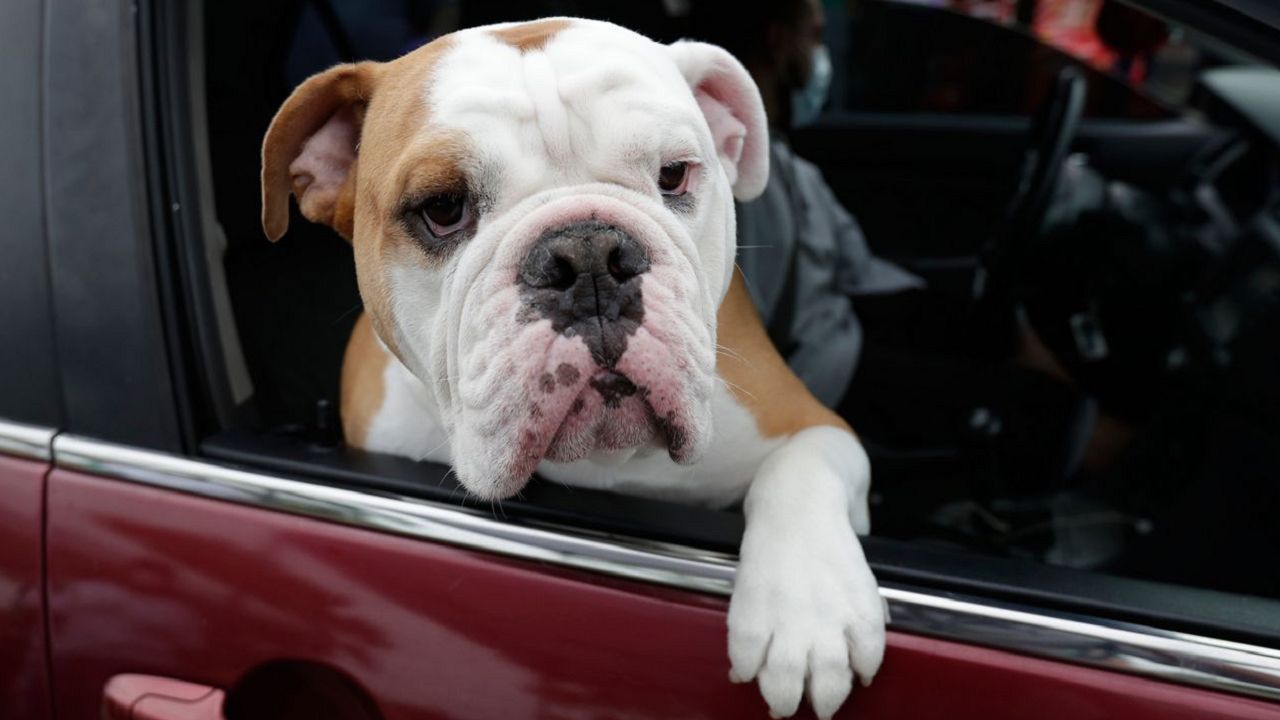WISCONSIN— As summer gets into swing, the weather is heating up here in Wisconsin — and that means car interiors are heating up too.
Especially in these next few months, vehicular heatstroke is a major concern for parents and pet owners. Here’s how to keep your little ones and furry friends safe in hot cars.
At this point, it seems like “pretty common knowledge” that you shouldn’t leave kids or pets alone in a parked car, says Wisconsin State Patrol Sergeant Richard Krisher. But tragedies continue to occur across the country.
In 2019, there were 52 children in the U.S. who died because they were left or became trapped in hot cars, according to the National Highway Traffic Safety Administration (NHTSA). This year, there have already been five of these deaths, researchers from San Jose State University report.
In Wisconsin, eight children have died from vehicular heatstroke since 1998, according to the San Jose State researchers.
Krisher says caretakers may underestimate how quickly a vehicle can actually heat up.
“The temperature inside a locked car can rise 20 degrees in just 10 minutes,” he says. “It’s kind of like a greenhouse effect inside the car, with the heat on the outside heating up the inside more rapidly.”
So, even if it’s only 80 degrees outside, within an hour the temperature inside a car can reach 123 degrees, as the Wisconsin Department of Transportation explains.
Hot cars are especially dangerous for kids because their bodies aren’t as effective at regulating temperature. According to NHTSA, a child’s body temperature rises three to five times faster than an adult’s. The same is true for small pets, Krisher says.
Heatstroke — also known as hypothermia — can set in once the core body temperature reaches 104 degrees Fahrenheit, with symptoms including dizziness, seizures, hallucinations, rapid heartbeat, and nausea. If that core temperature reaches 107 degrees, it can be fatal.
Because of how quickly this process can happen, parents should never leave kids in the car, even if they think they’re just stopping for one quick purchase, Krisher says.
“Sometimes they’ll go into a store and get a little distracted,” he says. “Time rolls on them and they don’t realize how long they’ve spent in the store.”
Most of the time, though, when a child dies from vehicular heatstroke, it’s because they were unknowingly left in the car, according to KidsAndCars.org. Especially when parents are stressed and tired, the brain can go on “auto-pilot” and fail to account for a change in routine — like remembering to stop at daycare on the way to work.
Krisher recommends caretakers make a habit of always getting out to check the backseat before locking the car: “Park it, look, then lock,” he says. Leaving an important personal item like a briefcase or purse in the backseat can also help remind drivers to take that extra step.
NHTSA also advises parents to have child care providers call any time their child doesn’t show up as expected, keep a stuffed animal in the front seat as another reminder to check for kids, and teach children that a vehicle is not a play area.
If you’re a bystander and see a child or pet in a car, you should immediately alert the authorities, Krisher says. Especially if the child or pet seems unresponsive, call 911 immediately to get help as soon as possible.
Wisconsin is also one of about 20 states to have “Good Samaritan” laws for rescuing people or animals trapped in vehicles, according to KidsAndCars.org. In Wisconsin, this law protects bystanders who break into someone else’s car to save a person or pet under some conditions.
“Basically, it relieves you of civil liability for having to replace the window if you break the window of a vehicle,” Krisher says.
For the law to apply, you have to contact law enforcement before breaking in and stay with the person or animal until help arrives, as well as have reason to believe they were in imminent danger and there was no other way to get them out of the vehicle.
So far this year, Krisher says the State Patrol hasn’t seen much of an uptick in calls related to vehicular heatstroke. They tend to see more calls throughout July and August, mostly for pets, he says.
So, this summer, make sure to look before you lock, and keep an eye out for kids and pets in trouble — because when cars start to heat up, every minute counts.



